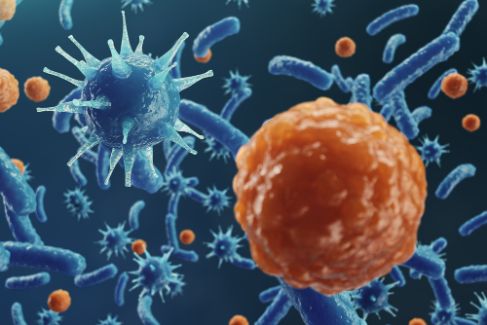Researchers are still unsure of the exact mechanisms behind the formation of tumors, but they do know that cancer stem cells are responsible for the recurrence of the disease. Since many types of cancer have stem cells, treatment regimens that shrink tumors may not completely eliminate the cause of the disease. Most treatments, including chemotherapy, target fast-growing cells and leave slow-cycling stem cells untreated. Some researchers believe that cancer stem cells may be protected from current treatment regimens and are responsible for the recurrence of the disease.
Several properties are shared by both CSCs and normal stem cells. Normal stem cells, for example, are found in a quiescent state and maintain their identity by occupying a specialized niche. When a stimulating signal is present, these cells become active. After activation, these cells can divide and produce differentiated cells. However, mutations in the genes encoding these genes can result in uncontrolled proliferation and tumorigenesis.
The role of cancer stem cells is understood by studying the pathways they activate. CAFs maintain the stem-like behavior of CSCs and promote cancer stemness through the Wnt/b-catenin and Notch pathways. They also secrete stromal-derived factor 1 (SDF-1) and TGF-b. In addition, cancer stem cells can induce tumor growth by stimulating the release of certain hormones. But it is unknown exactly how these CAFs become cancer stem cells.
Although CSCs are not responsible for initiation of cancer, they play important roles in the progression of the disease. These cells exhibit distinct roles in metastasis and angiogenesis. They are also associated with inflammation. Further research is needed to understand these factors in more detail. But these two factors are known to play key roles in the evolution of tumours. With further study, these cancer stem cells may be identified and treated. They may also be a valuable asset for the development of novel treatments.
As the cancer cell population increases, it may become more aggressive. This can result in poor treatment outcomes. As cancer cells invade new tissues, they may also start forming pre-metastatic niches. According to Kaplan et al., these pre-metastatic niches are formed by bone marrow-derived hematopoietic progenitor cells. Moreover, CSCs can form cellular clusters prior to tumour cells.
The researchers conducted studies in mice and humans. They discovered that the expression of the tumor-stem cell phenotype was correlated with the development of tumours. In vitro studies also suggested that the inflammatory phenotype induced by SH-infection induced NF-kB activation and expansion of mutant stem cells. In a mouse model, the cells of a patient with an underlying Opithorcis viverrini infection expressed CD133 and Oct3/4 molecules. This suggests that cancer stem cells are involved in this process.
Hypoxia can induce the development of tumours by promoting EMT and stemness. They also increase the expression of glycolytic genes and promote tumour aggression. Hypoxia also has many detrimental effects on cancer stem cells and may help develop new therapeutic strategies. Therefore, the study of the role of hypoxia in cancer progression is crucial in designing new therapies for the disease. When CSCs are injected with chemotherapy, they can be highly toxic and cause more toxicity than the original cancer cells.









